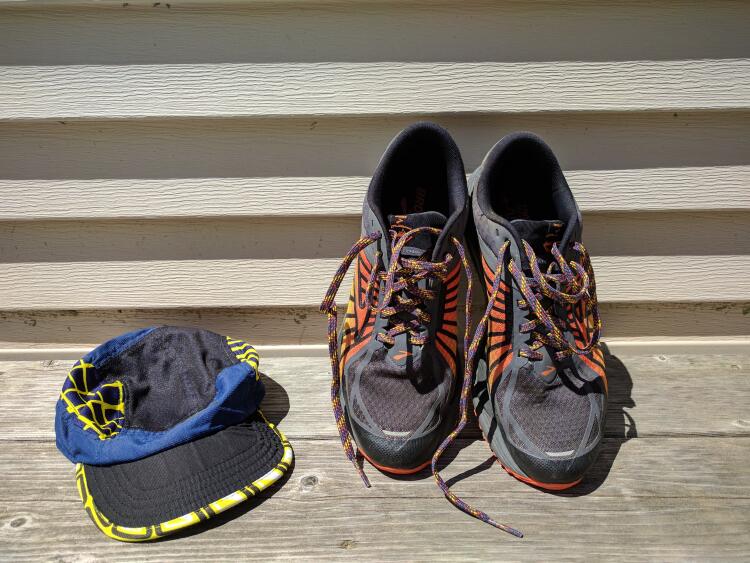Guest Post: Plantar Fasciits

Every so often, there are topics I would love to write about but don't feel that I have the right credentials to address fully. Injuries are one of those things. Thankfully, our friend Krystian at the Maine Medical Center is an expert, and has offered to help us talk about some common running injuries. First up, Plantar Fasciitis!
Runners rack up the mileage during the summer months, and when they do, heel pain can be a frequent complaint. There are many causes for heel pain in runners, but the most common one is plantar fasciitis.
The plantar fascia is a thick band of fibrous tissue that starts at the heel and extends toward the arch along the bottom of the foot. It acts as a suspension system for runners, stretching as the arch of the foot is extended during push-off and then contracting again. If the plantar fascia becomes inflamed, it can lead to the formation of scar tissue. Based on research and evaluation of the plantar fascia during surgery, it’s currently thought that pain in this area is caused by scar tissue that forms at the point where the plantar fascia attaches to the calcaneus, or heel bone.
The typical age for plantar fasciitis to start is between 40 and 60 years of age, but it often occurs at a younger age in runners. Most of the time it only involves one foot, but it can affect both feet in about a third of cases.
The cause of plantar fasciitis is often multi-factorial, and can be influenced by factors such as quick increases in training volume, anatomic issues such as flat feet (pes planus) or high arched feet (pes cavus), the wrong running shoe for the type of foot and running style, tight calf muscles, or a short Achilles tendon. Even changes in running surface, such as going from running on trails to running on concrete or black-top may play a part.
The pain from plantar fasciitis can be intense and even result in lost time from running. Therefore, it’s critical to get an accurate diagnosis early on in the process as it’s much easier to treat plantar fasciitis soon after it starts. Treatment usually begins with stretching the calf and plantar fascia, strengthening the foot, decreasing running volume, getting an appropriate footwear evaluation, and using over-the-counter gel heel inserts. Your doctor may also recommend a short course of higher dose non-steroidal anti-inflammatories. If those interventions don’t help, the use of a night splint, walking boot, or custom orthotics may be helpful. Fortunately, most runners get better with non-invasive treatment, but about 2-5% of runners may have symptoms for longer than 6-12 months, and in those cases, invasive therapies such as injections or surgery may be suggested.
There are a number of look-alike issues that can cause heel pain similar to plantar fasciitis, including stress fractures of the calcaneus, which can cause serious long-term issues if not diagnosed and treated appropriately. Therefore, it’s critical to get an accurate diagnosis with an experienced sports medicine practitioner, especially if your pain is getting worse and not improving with rest between runs. By addressing plantar fasciitis early and appropriately, almost all runners improve and can often keep running while treating this frustrating overuse injury.
Connect With Us
see the latest from Fleet Feet Maine Running